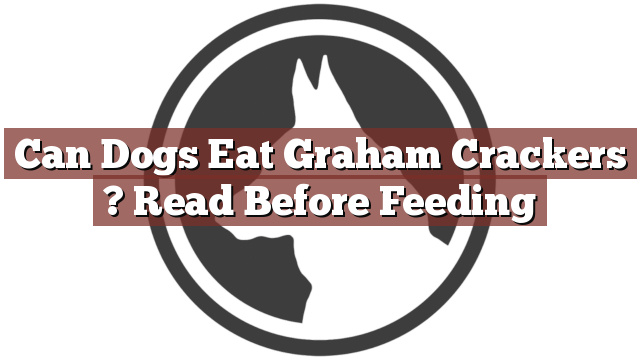Understanding Your Dog’s Dietary Needs
As a responsible pet owner, it is crucial to understand the dietary needs of your furry friend. Dogs have specific nutritional requirements that should be met through a balanced diet. While it may be tempting to share some of your favorite human snacks with your dog, it is essential to consider whether they are safe for canine consumption. Certain foods that are harmless to us can be harmful or even toxic to our four-legged companions. Therefore, it is essential to educate ourselves about what is appropriate to feed our dogs and what is not.
Can Dogs Eat Graham Crackers? Read Before Feeding
Can dogs eat graham crackers? It is a question that many dog owners may wonder, especially when their loyal companions give them those irresistible "puppy eyes" during snack time. Graham crackers are a popular snack among humans, often enjoyed as a treat or used as an ingredient in desserts. However, when it comes to our furry friends, it is important to exercise caution before sharing these crackers with them.
The answer is no, dogs should not eat graham crackers. While they may not be toxic, these sweet snacks are not suitable for canine consumption. Graham crackers typically contain added sugars, preservatives, and other ingredients that can be harmful to dogs. Additionally, they lack the necessary nutrients that fulfill a dog’s dietary requirements.
Pros and Cons of Feeding Graham Crackers to Dogs
Let’s take a closer look at the pros and cons of feeding graham crackers to dogs.
Pros:
- Graham crackers may be a good source of fiber for dogs in small amounts.
- They can be used as a treat during training sessions, rewarding good behavior.
Cons:
- Graham crackers are high in sugar and empty calories, contributing to weight gain and potential dental issues for dogs.
- The added ingredients and preservatives in graham crackers may upset a dog’s stomach or cause digestive issues.
- Dogs may develop a preference for sweet treats, leading to a reluctance to eat their regular, nutritionally balanced dog food.
In Conclusion: Consider Your Dog’s Health and Consult a Veterinarian
While it may be tempting to share our favorite snacks with our dogs, it is essential to prioritize their health and well-being. When it comes to graham crackers, the answer to whether dogs can eat them is a resounding no. These snacks lack the necessary nutrients and can be harmful due to their high sugar content and added ingredients.
To ensure your dog’s diet is appropriate, it is always a good idea to consult with a veterinarian. They can provide personalized dietary recommendations based on your dog’s breed, age, weight, and overall health. Remember, a balanced and nutritious diet is essential for your dog’s long-term health, happiness, and vitality.
Thank you for taking the time to read through our exploration of [page_title]. As every dog lover knows, our furry friends have unique dietary needs and responses, often varying from one canine to another. This is why it's paramount to approach any changes in their diet with caution and knowledge.
Before introducing any new treats or making alterations to your dog's diet based on our insights, it's crucial to consult with a veterinarian about [page_title]. Their expertise ensures that the choices you make are well-suited to your particular pet's health and well-being.
Even seemingly harmless foods can sometimes lead to allergic reactions or digestive issues, which is why monitoring your dog after introducing any new food item is essential.
The content provided here on [page_title] is crafted with care, thorough research, and a genuine love for dogs. Nevertheless, it serves as a general guideline and should not be considered a substitute for professional veterinary advice.
Always prioritize the expert insights of your veterinarian, and remember that the health and happiness of your furry companion come first.
May your journey with your pet continue to be filled with joy, love, and safe culinary adventures. Happy reading, and even happier snacking for your canine friend!

